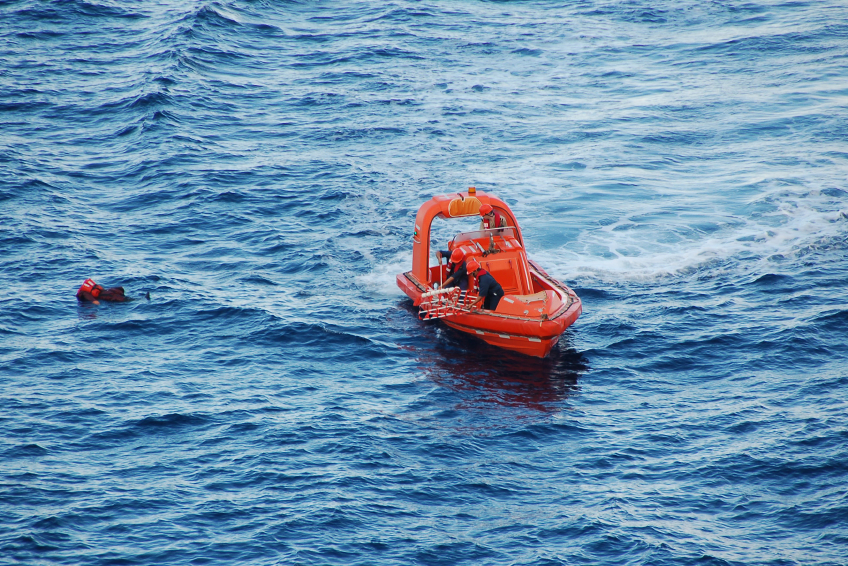It was supposed to be just a cozy little after-work dive. Our dive shop holds these every Wednesday, and divers from our local area meet up with us for shore dives after working hours. It’s a good way for inexperienced divers to learn the ropes while diving with more experienced divers, for divers without buddies to easily find someone to dive with and for experienced divers to see new locations.
We had gone out to a beach a bit north of the shop, a spot we’d been to many times before. There is a good parking lot here for leaving the cars and getting kitted up and a fairly easy, if somewhat rocky, access point into the water. Before heading out, I’d checked the weather report. It called for a fresh breeze coming in from the southeast. This is pretty much the worst possible direction, as it puts the wind square on the coast, kicking up the sea bottom and lowering visibility. We’d agreed to give the dive a go anyway, but I wasn’t expecting to see much.
When we got to the dive site, conditions were as expected: good-sized swells on the entrance and almost no visibility. Still, everyone among us on this pleasure dive were trained scuba divers and able to take care of themselves, so it should be fine. I had a student with me that needed to finish her Scuba Diver training (equivalent to Open Water Diver), but seeing as it was a one-on-one scenario, I determined it could work. We all suited up and went in. The main group headed off with one of my co-instructors and I went with the student.
The student did her drills with flying colors and we completed our dive, still in near-zero visibility, then returned to the surface. The rest of the group was heading in then as well except for the other instructor, who stayed in the water. That’s not right, I thought. As we got to the parking lot, one of the other divers confirmed my gut feeling. A diver was unaccounted for. They had all gone down the buoy line together, but when they all got to the bottom one diver was missing. And the diver hadn’t returned to the surface or to the group.
I dumped my gear with the exception of my fins and mask, told a few of the others to scan the water for the diver or any bubbles while others went up the beach in the direction the current was moving, checking to see if the diver had been carried away by the current and made it to shore farther up. I went into the water to assist.
Long story short, the diver resurfaced not long after. At the time I was pretty sure it had been hours, but in reality it was more like five or ten minutes after I’d surfaced that the diver was located. The buoy had moved due to the swells and the diver had gotten separated from it. Trying to find the group hadn’t worked. So after a while the diver simply surfaced, unaware of the search that was going on above. All’s well that ends well.
Afterwards, when the adrenaline had been flushed from the body, I realized what training accomplishes. Everyone had done the right thing. The instructor in charge had initiated the search while other divers took lookout position and did searches in other likely areas. Those who weren’t able to help right away stayed out of the way but within reach in case their assistance was needed. No one turned to the Rescue Diver manual because no one had to. The right response had been practiced many times – so many times that it had become something close to second nature. And ultimately, that’s why we practice. Not because what we do as divers is necessarily rocket science – in fact, most of a Rescue Diver course is just advanced common sense. Rather, we practice these things to make sure that when we need them – when the adrenaline is pumping and there are lives on the line – the right actions are second nature to us.
UPDATE: Comment from the Writer:
Comments are always more than welcome, and I love it when my blog posts get a good debate going. But in response to some of the comments to this article, I just wanted to clarify a few things that may have been unclear in the blog post.
This last bit is actually what I intended to focus on with the article: that divers, with the proper training, can respond impressingly quickly and efficiently, and that this situation, while benign, reminded me why it is the Rescue Diver course and rescue training in general is paramount to making diving the safe activity that it is.


